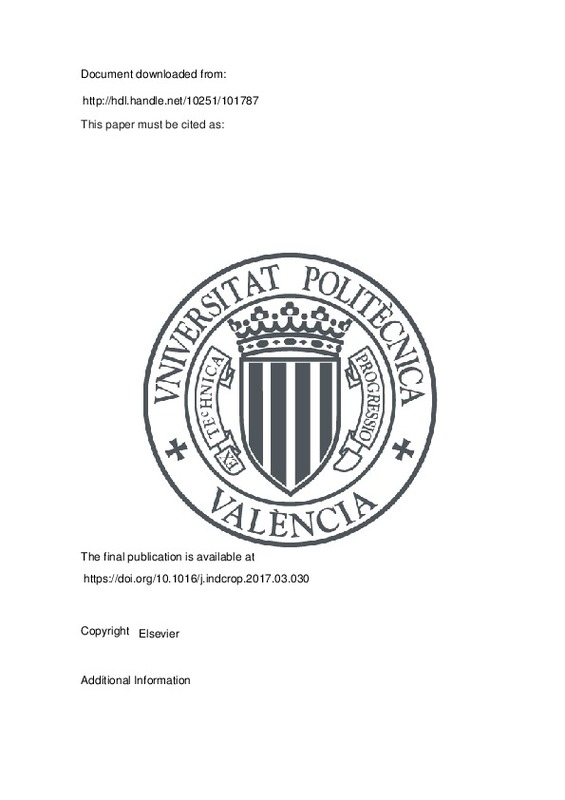JavaScript is disabled for your browser. Some features of this site may not work without it.
Buscar en RiuNet
Listar
Mi cuenta
Estadísticas
Ayuda RiuNet
Admin. UPV
Rice straw ash: A potential pozzolanic supplementary material for cementing systems
Mostrar el registro sencillo del ítem
Ficheros en el ítem
| dc.contributor.author | Rosello Caselles, Josefa
|
es_ES |
| dc.contributor.author | Soriano Martínez, Lourdes
|
es_ES |
| dc.contributor.author | Santamarina Siurana, Mª Pilar
|
es_ES |
| dc.contributor.author | Akasaki, Jorge Luis
|
es_ES |
| dc.contributor.author | Monzó Balbuena, José Mª
|
es_ES |
| dc.contributor.author | Paya Bernabeu, Jorge Juan
|
es_ES |
| dc.date.accessioned | 2018-05-12T04:16:12Z | |
| dc.date.available | 2018-05-12T04:16:12Z | |
| dc.date.issued | 2017 | es_ES |
| dc.identifier.issn | 0926-6690 | es_ES |
| dc.identifier.uri | http://hdl.handle.net/10251/101787 | |
| dc.description.abstract | [EN] Biomass waste from rice straw has many management problems, including field firing causing severe air pollution and natural organic decomposition resulting in methane emission. The conversion of this waste to ashes may offer the possibility of reusing them in cementing systems. For the first time ashes from different parts of the rice plant (Oryza sativa) were characterised from the chemical composition point of view: rice leaf ash (RLA), rice leaf sheath ash (RlsA) and rice stem ash (RsA). Microscopic studies on ashes revealed heterogeneity in the distribution of chemical elements in the remaining cellular structure (spodograms). The highest concentration of SiO2 was found in dumbbell-shaped phytoliths (%SiO2 > 78%). In the global chemical composition of ashes, SiO2 was also the main oxide present. According to Vassilev¿s classification of chemical composition, RLA belongs to the K-MA zone (medium acid), RlsA to the K-zone (low acid) and RsA to the S-zone (high acid). Calcination temperatures ¿550 ¿C completely removed organic matter from the straw and ashes underwent significant sinterisation by calcining at 650 ¿C due to the presence of potassium chloride. Here, ashes from global straw (rice straw ash, RSA) are characterised (via X-ray diffraction, Fourier transform infrared spectroscopy and thermogravimetry) and tested from a reactivity point of view (reaction towards calcium hydroxide) in order to assess the possibility for its reuse in cementing systems. Results from pastes made by mixing RSA and calcium hydroxide showed that the pozzolanic reactivity of the ashes is important (hydrated lime fixation of 82% for 7 days and 87% for 28 days in RSA:hydrated lime paste) and cementing C S H gel is formed after 7 and 28 days at room temperature. Compressive strength development of Portland cement mortars with 10% and 25% replacements by RSA yielded 107% and 98% of the strength of control mortar after 28 days of curing. Frattini test confirmed the pozzolanicity of the RSA blended cements. These reactivity results are very promising in terms of the potential reuse of ashes in cementing systems. | es_ES |
| dc.description.sponsorship | The authors acknowledge the financial support of the Ministerio de Economia y Competitividad MINECO, Spain, and FEDER funding [Project: B1A2015-70107-R] The authors thank the Electron Microscopy Service of the Universitat Politecnica de Valencia (Spain). | es_ES |
| dc.language | Inglés | es_ES |
| dc.publisher | Elsevier | es_ES |
| dc.relation.ispartof | Industrial Crops and Products | es_ES |
| dc.rights | Reserva de todos los derechos | es_ES |
| dc.subject | Rice straw ash | es_ES |
| dc.subject | FESEM | es_ES |
| dc.subject | Spodogram | es_ES |
| dc.subject | Chemical composition | es_ES |
| dc.subject | Amorphous silica | es_ES |
| dc.subject | Pozzolanic reactivity | es_ES |
| dc.subject | Electron Microscopy Service of the UPV | |
| dc.subject.classification | INGENIERIA DE LA CONSTRUCCION | es_ES |
| dc.subject.classification | BOTANICA | es_ES |
| dc.subject.classification | BIOLOGIA VEGETAL | es_ES |
| dc.title | Rice straw ash: A potential pozzolanic supplementary material for cementing systems | es_ES |
| dc.type | Artículo | es_ES |
| dc.identifier.doi | 10.1016/j.indcrop.2017.03.030 | es_ES |
| dc.relation.projectID | info:eu-repo/grantAgreement/MINECO//BIA2015-70107-R/ES/APLICACIONES DE SISTEMAS GEOPOLIMERICOS OBTENIDOS A PARTIR DE MEZCLAS DE RESIDUOS: MORTEROS,HORMIGONES Y ESTABILIZACION DE SUELOS/ | es_ES |
| dc.rights.accessRights | Abierto | es_ES |
| dc.date.embargoEndDate | 2019-09-01 | es_ES |
| dc.contributor.affiliation | Universitat Politècnica de València. Departamento de Ecosistemas Agroforestales - Departament d'Ecosistemes Agroforestals | es_ES |
| dc.contributor.affiliation | Universitat Politècnica de València. Departamento de Ingeniería de la Construcción y de Proyectos de Ingeniería Civil - Departament d'Enginyeria de la Construcció i de Projectes d'Enginyeria Civil | es_ES |
| dc.contributor.affiliation | Universitat Politècnica de València. Instituto de Ciencia y Tecnología del Hormigón - Institut de Ciència i Tecnologia del Formigó | es_ES |
| dc.description.bibliographicCitation | Rosello Caselles, J.; Soriano Martínez, L.; Santamarina Siurana, MP.; Akasaki, JL.; Monzó Balbuena, JM.; Paya Bernabeu, JJ. (2017). Rice straw ash: A potential pozzolanic supplementary material for cementing systems. Industrial Crops and Products. 103:39-50. https://doi.org/10.1016/j.indcrop.2017.03.030 | es_ES |
| dc.description.accrualMethod | S | es_ES |
| dc.relation.publisherversion | https://doi.org/10.1016/j.indcrop.2017.03.030 | es_ES |
| dc.description.upvformatpinicio | 39 | es_ES |
| dc.description.upvformatpfin | 50 | es_ES |
| dc.type.version | info:eu-repo/semantics/publishedVersion | es_ES |
| dc.description.volume | 103 | es_ES |
| dc.relation.pasarela | S\355692 | es_ES |
| dc.contributor.funder | Ministerio de Economía, Industria y Competitividad | es_ES |







![[Cerrado]](/themes/UPV/images/candado.png)

